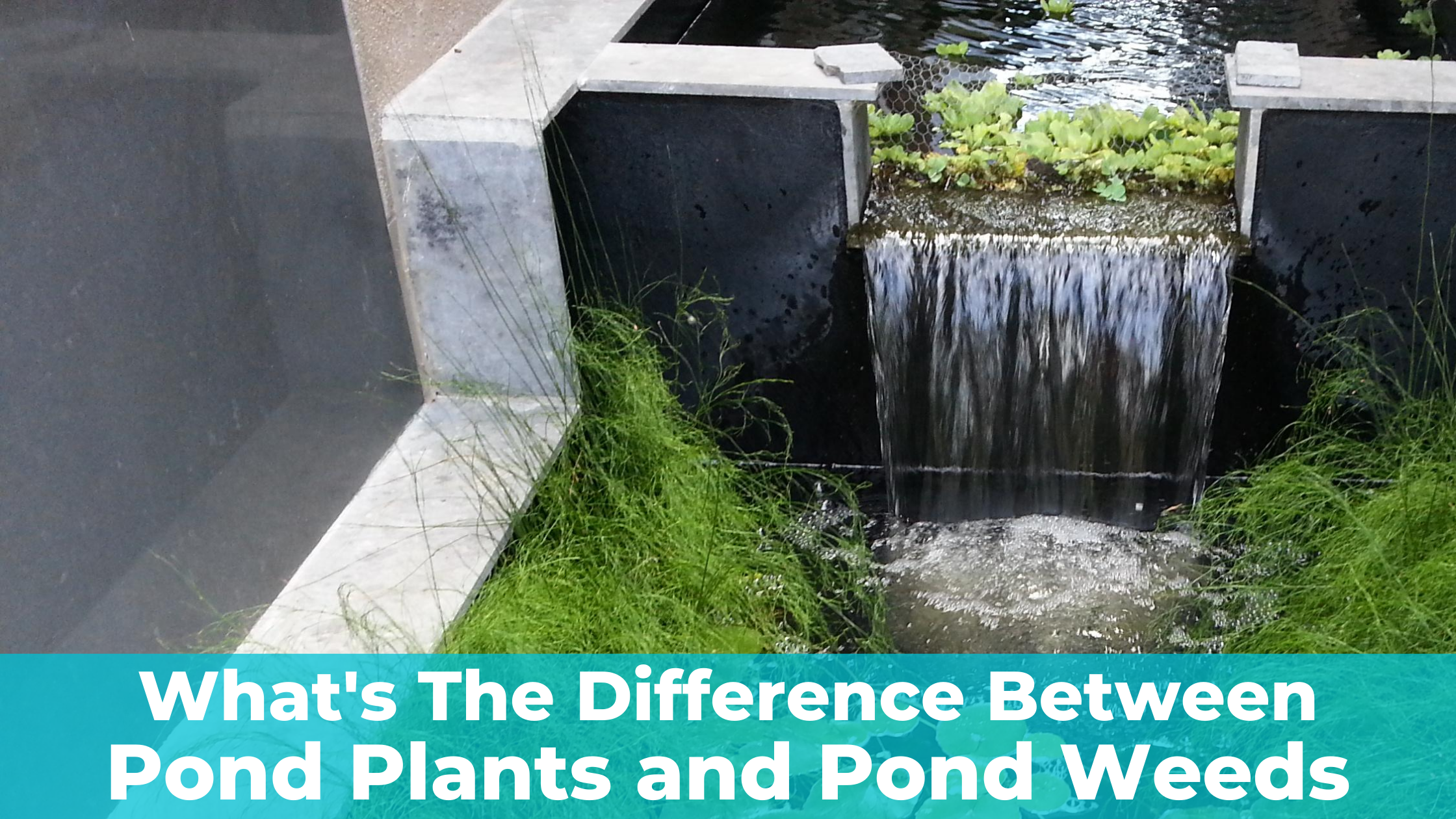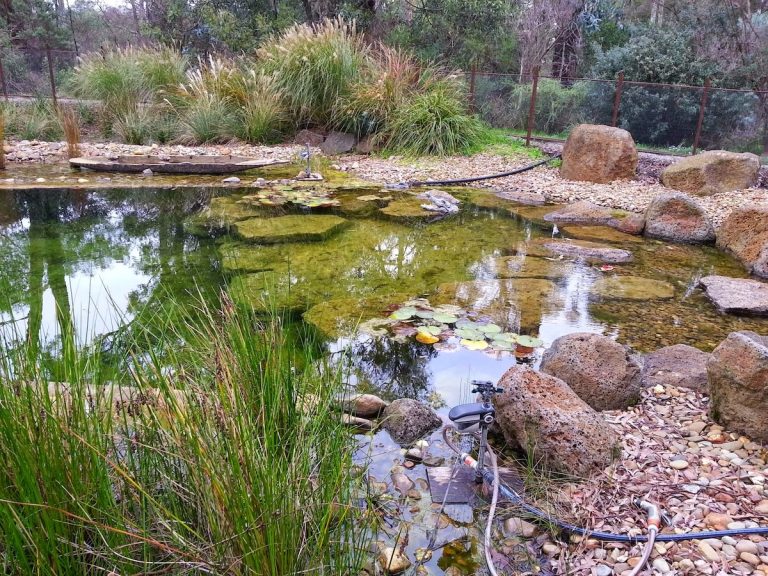One man’s trash is another man’s treasure. There is really no specified, over-arching scientific definition for what is and is not an aquatic weed but loosely, you could view an aquatic weed as a species that is grown in excess to a point in which is out competing other desired species for space, light, nutrients or has a negative impact over your waterbody’s ecosystem.
We break aquatic plants up into three main categories;
- Submerged Species – These plants usually exist beneath the water surface.
- Emergent Species – Aquatic plants that also grow beneath the water surface but often have growth above the water surface.
- Floating Species – Plants that float around the surface of your pond or dam like little boats.
Pond Weeds:
Species that are non-native or have a tendency to rapidly spread can be considered pond weeds.
If left unchecked aquatic weed can leads to very expensive and time consuming control activities.
If you notice a plant becoming ‘weedy’ it is best to act immediately and contact our team to discuss the options that are best for you but be prepared to be asked the question ‘What aeration systems or biological treatment plan are you currently implementing to manage the nutrient levels?”
If the answer is NONE, then we will discuss why that’s important.
Aquatic species and algae are able to grow in your pond or dam because there are nutrients in the water which allow them to. If the nutrient storage levels are high (which is very common) then you will find things grow quickly and easily get out of hand in what can feel like no time at all.
Sure, you could throw expensive chemicals at the dam, or spend each weekend dragging out weed, but these are band-aid fixes and don’t address the underling issue. This means you’ll never truly be rid of them and will be stuck in a vicious cycle of bombing and cutting.
So what do you do instead? You manage the excessive nutrient load. This where aeration and biological treatments come in.
How Can I Deal With Pond Weeds?
If weeds have already taken over your pond, however, and you really need to fix things before you can look at overall management, our general recommendation is a combination of manual removal and spraying what remains with select herbicide and adjutants.
Manual removal:
The goal of manual removal is to get out as much of the plant material that you can.
If organic material (aquatic plants, algae, etc.) is left to grow and die back, it simply adds to the nutrient storage (sludge) and feeds next season’s issue. Depending on the type of weed, we have a variety of effective tools to help get the job done and our experienced onsite services team can get the job done for you.
It is important to note that even when you think you’ve eradicated the weed, many species will continue to grow back or something else will take it’s place.
Spraying:
There are a variety of chemical herbicides on the market and it is very important to select the right one for your situation.
Get in touch with our team and we will help you chose the right one for the job.
It is important to note that many species can build up resistances to chemical treatments which leads to this type of treatment becoming ineffective over time. Some treatments can also leave residuals behind which can be toxic if accumulated. Because of this, you should always do extensive research before placing any chemical treatments within your water body.
Pond Plants:
Pond plants can be viewed as species that add benefit to your pond or dam by up taking nutrients, providing habitat or food for fish, birds or frogs, assist in reducing soil erosion or that you simply just love and are able to keep maintained.
You can check out our blog on the best plants for Aussie ponds if you’re not sure what kind of plant you’d prefer.
What Are The Benefits?
Filtering nutrients from the water:
If you know what Aquaponics or Hydroponics is then this then you’ll understand this.
For those of you following along at home, the three main things that plants need to survive are water, light and nutrients. Within the nutrient category, plants are particularly good at absorbing nitrogen, phosphorus and potassium among a few other things including oxygen.
These nutrients are readily available in ponds and dams due to organic litter (leaves, dead algae, dead aquatic plants) that is left to rot at the bottom of the dam as well as duck poop, fish waste and nutrient rich run-off. Including, in some, cases literal fertiliser from your garden.
Plants can access these nutrients via their root systems and help to filter out some of the nutrients from your water.
*But remember, with abundant nutrient load comes abundant growth, so be sure to add your pond or dam to your weekly gardening schedule.
Providing habitat and food for fish, birds, frogs and other animals:
Ever walked by a dam, pond or wetland to hear the beautiful song of a frog that seems to be right under your feet but damned (pun intended) if you can see it?
Frogs rely on aquatic plants to provide habitat and protect them from predators, as well as a space to sit on and chill out.
Plus, some bird species use aquatic plants to nest and fish love to hide amongst the plants to protect from being picked off by predators (and you).
And, some of your fishy friends will also eat the plants.
Reduce soil erosion and help with water clarity:
We get so many calls from people who are sick of their dam being muddy. A major cause of muddy dams is soil erosion (when the banks wash into the dam and dirt becomes suspended in the water).
A great way to prevent this is to plant up the banks of your dam with aquatic plants as their roots help to strengthen the soil and prevent erosion.
Please Note: If your dam is already muddy, you may still need to treat the dam with a flocculant to help settle it out even more.
Added aesthetics:
This is a bit of a no brainer, but adding plants to your pond or dam can improve the aesthetic value with beautiful flowering species and lush green growth.
In Conclusion:
There you have it folks, plants can have immense benefits for your pond or dam and wider ecosystem, but be sure to select the right species and understand that what you plant will need some maintenance to prevent some headaches down the track.
So while you’re standing next to your planted up pond or dam, listening to the frogs and watching the birds swanning around, take the opportunity to do some maintenance too.
With so many added benefits you’ll be so happy you spent that weekend planting the right aquatic plants around your pond or dam.




